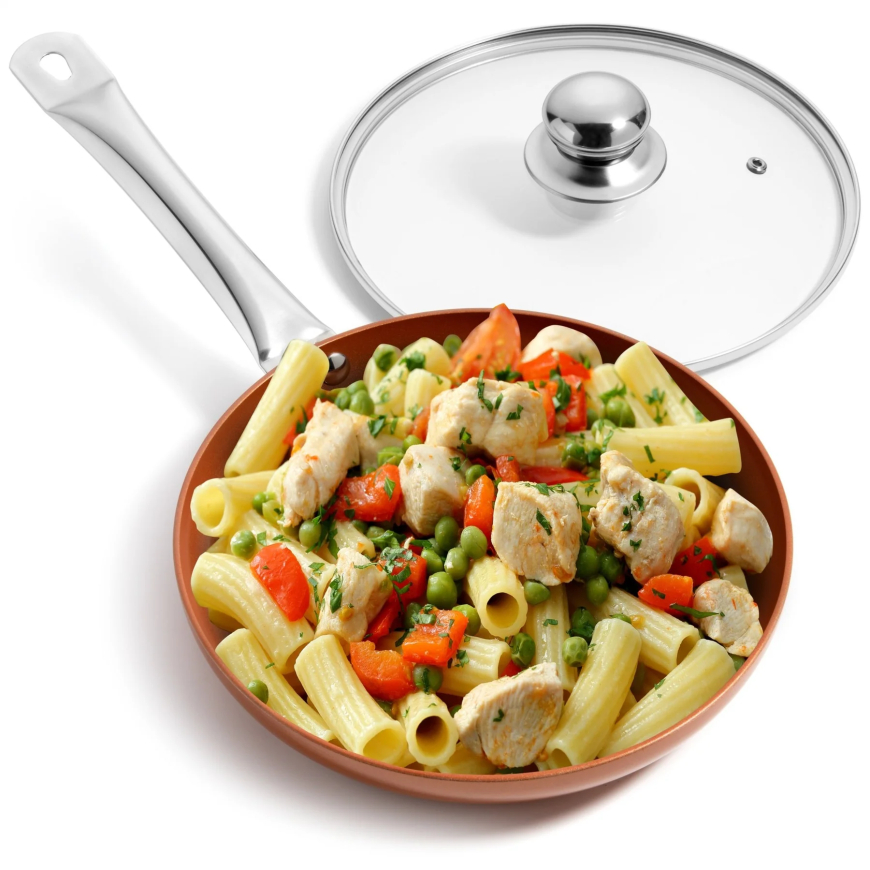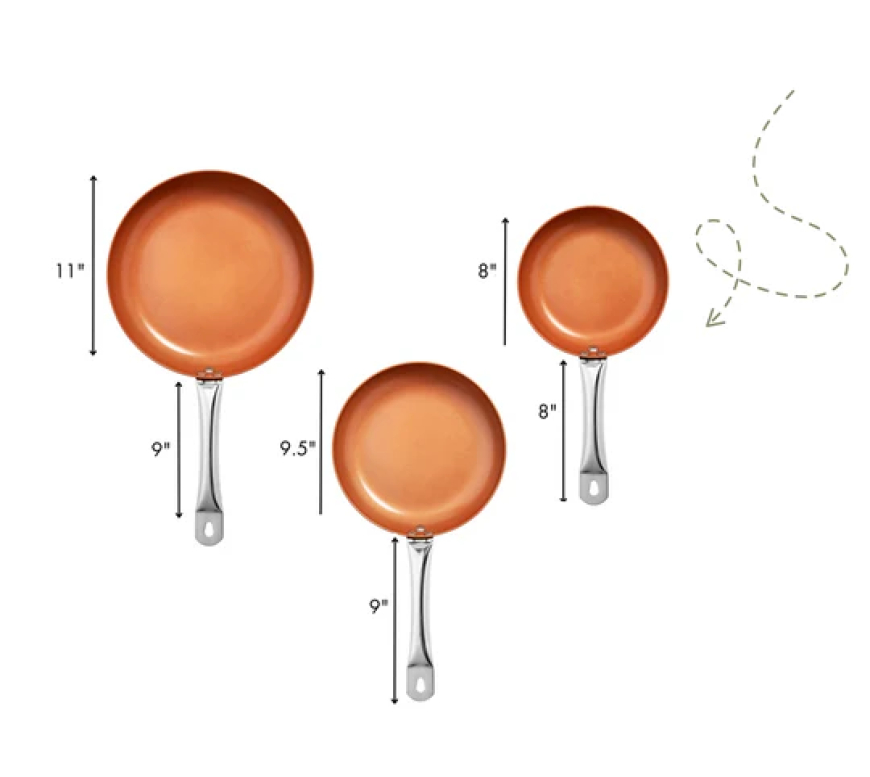The Ultimate Guide to Copper Pans: Why They’re a Must-Have in Your Kitchen
If you’re passionate about cooking, the type of cookware you use can make a significant difference in your culinary results. Among the various materials available, copper pan stand out as a favorite among both amateur cooks and professional chefs. But what makes copper so special? In this comprehensive guide, we’ll explore the benefits of copper pans, how to choose the right one, and how to care for it to ensure it lasts a lifetime.
Introduction to Copper Pans
Copper pans are not just about aesthetics; they’re a powerhouse in the kitchen. With their distinct, eye-catching appearance, they’ve long been a symbol of quality and precision in cooking. But beyond their looks, copper pans offer unique advantages that other materials simply can’t match. Let’s delve into why copper should have a place in your kitchen.
Why Copper? The Benefits of Cooking with Copper Pans
Copper pans are celebrated for several reasons. From their unparalleled heat conductivity to their ability to make any kitchen look professional, the benefits are numerous. Let’s take a closer look at what makes copper the material of choice for serious cooks.
Superior Heat Conductivity
One of the standout features of copper pans is their superior heat conductivity. Copper conducts heat much better than other materials like stainless steel or aluminum, which means your pan heats up quickly and evenly. No more hot spots that can ruin a dish—copper ensures uniform cooking every time.
Precise Temperature Control
Along with great heat conductivity, copper pans allow for precise temperature control. This is essential when cooking delicate dishes that require exact temperatures. Whether you’re searing a steak or making a delicate sauce, copper gives you the control you need for perfect results.
Aesthetic Appeal
Let’s face it—copper pans are beautiful. Their rich, warm color and shiny surface add a touch of elegance to any kitchen. They’re not just functional; they’re a statement piece. Hanging a few copper pans in your kitchen can instantly elevate the space’s aesthetic.
Durability and Longevity
When properly cared for, copper pans can last a lifetime. They’re incredibly durable and resistant to damage. While they do require some upkeep to maintain their appearance and performance, the investment in care is well worth it for cookware that can be passed down through generations.
Different Types of Copper Pans
Not all copper pans are created equal. There are several types to choose from, each with its own set of characteristics. Knowing the difference can help you pick the best pan for your needs.
Lined vs. Unlined Copper Pans
The first thing to consider is whether the pan is lined or unlined. Unlined copper pans are typically used for specific purposes, such as beating egg whites or cooking sugar, where the reactivity of copper is actually beneficial. However, most copper pans used for general cooking are lined.
Tin-Lined Copper Pans
Tin lining is traditional and has been used for centuries. It’s a softer metal, so it requires some care to avoid scratching, but it provides an excellent cooking surface that’s naturally non-stick. Tin-lined copper pans are perfect for those who want to stick with tradition and prefer the slightly forgiving nature of tin.
Stainless Steel-Lined Copper Pans
Stainless steel-lined copper pans are a modern innovation that offers the best of both worlds. You get the superior heat conductivity of copper with the durability and non-reactivity of stainless steel. These pans are easier to maintain and can handle higher heat, making them a popular choice for everyday use.
How to Choose the Right Copper Pan for Your Kitchen
Choosing the right copper pan involves more than just picking the first one you see. There are a few key factors to consider to ensure you get a pan that suits your cooking style and needs.
Thickness Matters: Gauge and Performance
The thickness of the copper is a critical factor in performance. Thicker copper means better heat retention and more even cooking. Look for pans that are at least 2.5mm thick for the best results.
Handle Material: Brass, Stainless Steel, or Cast Iron?
The handle material affects the pan’s weight, balance, and ease of use. Brass handles stay cooler longer but are heavier. Stainless steel handles are lighter and cooler, while cast iron handles are the heaviest and can retain heat, which might not be ideal for all cooks. Consider what feels most comfortable for you.
Size and Shape Considerations
Finally, think about the size and shape of the pan. Larger pans are great for big meals, but they’re also heavier and harder to handle. The shape matters too—a wider pan allows for more even cooking, while a deeper pan is perfect for sauces and soups. Choose based on what you cook most often.
Caring for Your Copper Pan: Maintenance and Cleaning Tips
Proper care is essential to keep your copper pan in top condition. Although they require a bit more attention than other types of cookware, the payoff is worth it. Here’s how to care for your copper pan to ensure it remains beautiful and functional for years to come.
Polishing for Shine: Keeping the Copper Bright
Copper naturally tarnishes over time, developing a patina. While some cooks prefer this aged look, others like their copper shiny. If you fall into the latter group, regular polishing is necessary. Use a copper cleaner or a homemade mixture of lemon juice and salt to bring back the shine.
Cleaning the Inside: Dealing with the Lining
The lining inside your copper pan, whether it’s tin or stainless steel, needs proper care. Avoid abrasive sponges or harsh chemicals that could damage the lining. Instead, clean with warm, soapy water and a soft cloth. If food sticks, soak the pan first rather than scrubbing.
Storing Your Copper Pan: Avoiding Scratches and Dents
Storing copper pans properly is crucial to prevent scratches and dents. If you hang them, make sure they don’t clang together. If you stack them, place a soft cloth or paper towel between each pan to protect the surfaces.
Common Myths About Copper Pans
Copper pans are surrounded by myths that can make potential buyers hesitant. Let’s debunk some of the most common misconceptions.
Myth: Copper Pans are Hard to Maintain
While copper pans do require maintenance, they’re not as difficult to care for as some might think. A little regular upkeep, like polishing and gentle cleaning, is all it takes to keep them in great shape. The effort is minimal compared to the benefits of cooking with copper.
Myth: Copper Pans are Only for Professional Chefs
Copper pans are often associated with professional kitchens, but they’re not exclusively for pros. Anyone who enjoys cooking can benefit from using a copper pan. Their superior heat conductivity and precise control make them suitable for cooks of all levels.
Conclusion: Investing in a Copper Pan is Worth It
Investing in a copper pan is an investment in your cooking. The benefits, from even heat distribution to their beautiful appearance, make copper pans a worthwhile addition to any kitchen. While they do require some extra care, the results they help you achieve are more than worth the effort. Whether you’re a seasoned chef or just starting out, a copper pan can elevate your cooking to new heights.
FAQs
Q1: Are copper pans safe to use for all types of cooking?
A1: Yes, copper pans are versatile and can be used for a wide range of cooking methods, including sautéing, frying, and even baking.
Q2: Do copper pans work on induction cooktops?
A2: Pure copper pans do not work on induction cooktops because they are not magnetic. However, some copper pans have a magnetic layer on the base that allows them to be used on induction stoves.
Q3: How often should I polish my copper pan?
A3: It depends on how often you use the pan and how shiny you want it to be. Regular use might require polishing every few months, while less frequent use may only need polishing once or twice a year.
Q4: Can I use metal utensils with my copper pan?
A4: It’s best to avoid metal utensils as they can scratch the lining. Opt for wooden, silicone, or plastic utensils to prolong the life of your copper pan.
Q5: What should I do if my copper pan’s lining gets scratched?
A5: If the lining is tin, you can have it re-tinned by a professional. If it’s stainless steel, minor scratches are usually harmless, but deep scratches might require professional assessment.














